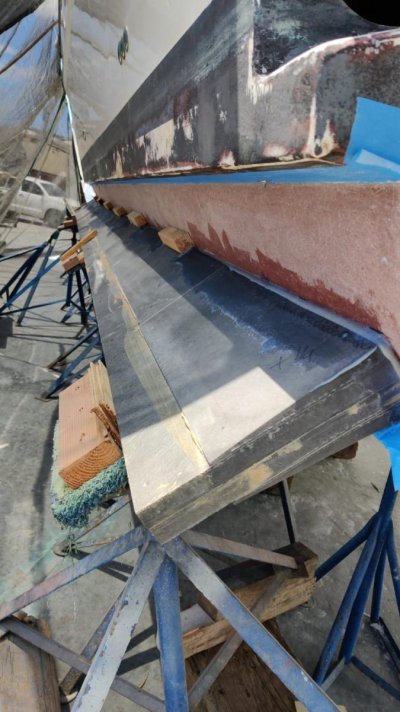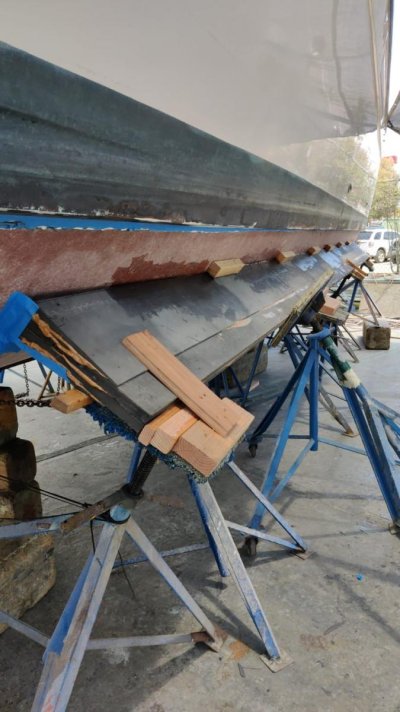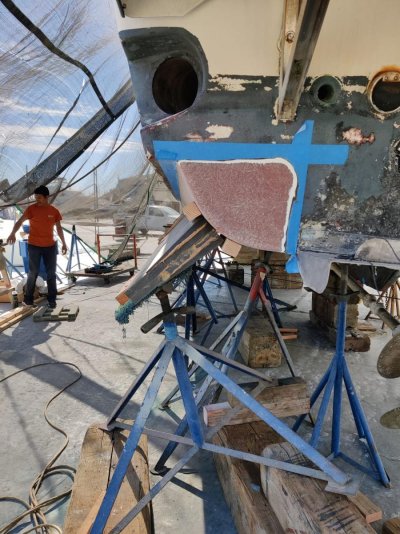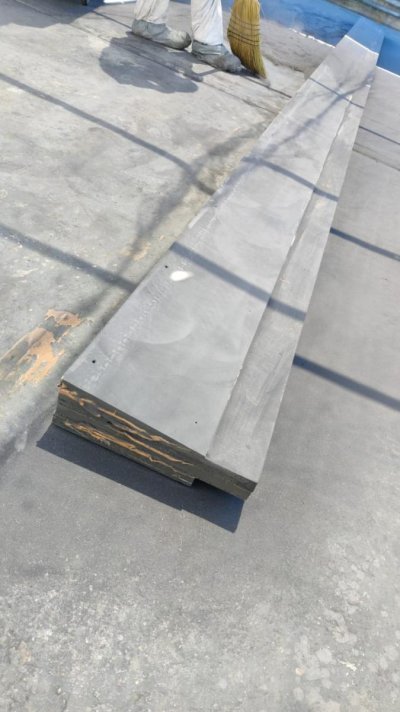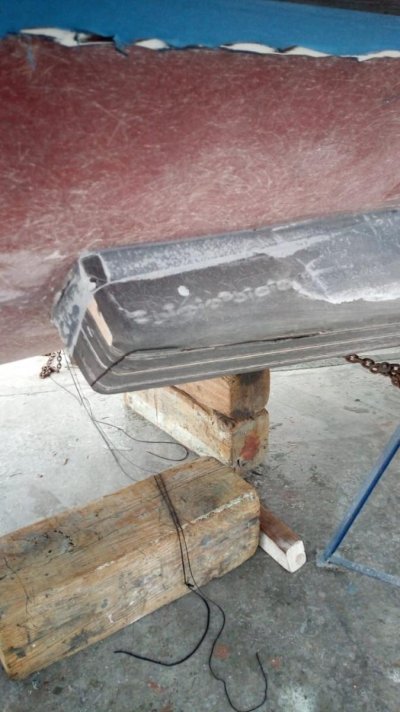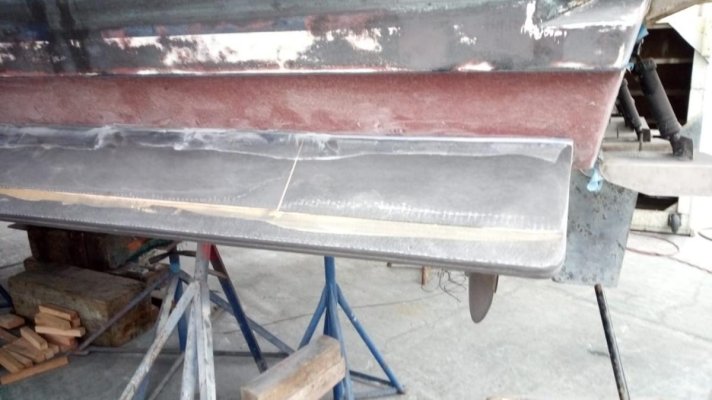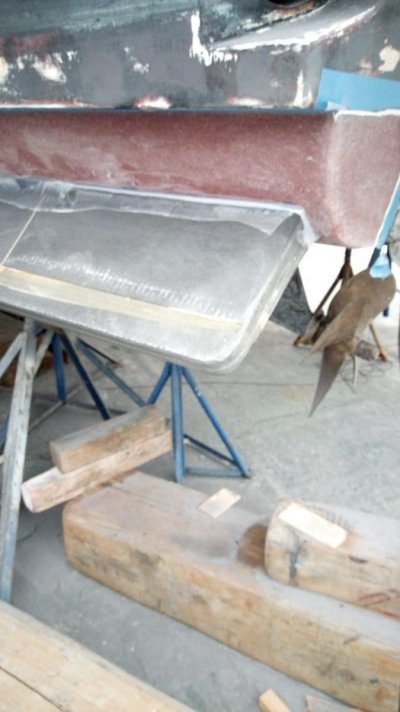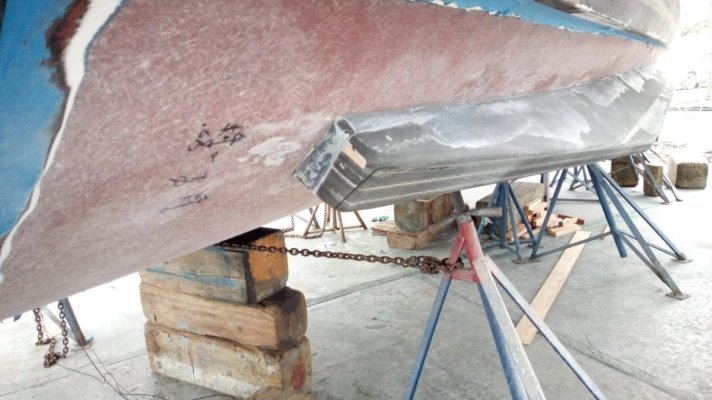ksanders
Moderator Emeritus
After a lot of time thinking about stabilization, and talking to other owners of my same boat I have decided to add Bilge Keels - Rolling Chocks. I am not sure which is the correct term.
I have reports from several owners of this same boat who have made this modification, and have spoken with one owner at length about the changes he noticed.
His words were that the Bayliner 4788 with it's rounded chines and small keel is like a beach ball in the water. There is nothing to stop the roll. He told me that adding bilge keels changed roll of the boat dramatically, amd made it feel like a whole different boat.
The keels are 24' long by 12" deep. They are made of Coosaboard, a total of 4" at the base and tapering to 2" at the tip.
They start at the aft of the boat, and continue foreward to the point where the hull starts to curve inward. They are being installed at a 45 degree angle and are placed so that they do not extend beyond the hull from a foot above the waterline as to not interfere with docking against a typical floating dock.
Here are some photos of the ongoing work
I have reports from several owners of this same boat who have made this modification, and have spoken with one owner at length about the changes he noticed.
His words were that the Bayliner 4788 with it's rounded chines and small keel is like a beach ball in the water. There is nothing to stop the roll. He told me that adding bilge keels changed roll of the boat dramatically, amd made it feel like a whole different boat.
The keels are 24' long by 12" deep. They are made of Coosaboard, a total of 4" at the base and tapering to 2" at the tip.
They start at the aft of the boat, and continue foreward to the point where the hull starts to curve inward. They are being installed at a 45 degree angle and are placed so that they do not extend beyond the hull from a foot above the waterline as to not interfere with docking against a typical floating dock.
Here are some photos of the ongoing work

